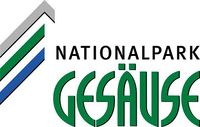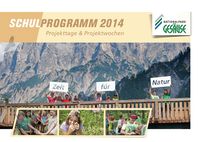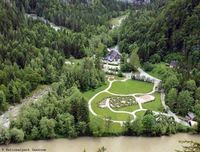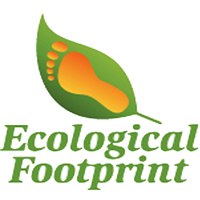Students:Group Five: Filip, Lucie H, Karolina, Ivona


The last day of our field trip we visited Geasause National Park, which is near Eisenerz, the town we spent our time in the day before. It’s obvious that the weather in the mountains changes very often and it‘s raining a lot. Sadly, that day wasn’t an exception. Our guide in the national park was a very friendly woman from the department of environmental education. She showed us a presentation about the park, the preservation of nature, special projects and cooperation with partners. Her English was easy to understand.
About the national park

Gesäuse National Park is located in central Austria in the north of Styria province. It’s the youngest one out of the six Austrian national parks (founded in 2002) and with its area of 11,054 ha is the third largest. Half of the area is covered by forests. It‘s situated in the Ennstal Alps, which is a mountain range of limestone and dolomit origin. It’s been very popular among climbers for over 100 years. The character of the valley is formed by the river Enns that cuts through the mountains. The total length of this river is more than 200 km and its mostly regulated and modified by humans, except the part that flows through the park. The unchanged natural character and dynamics of the river, steep mountain ranges and huge differences in height provide suitable living conditions for endangered and rare species of plants and wildlife and high diversity of habitat. Each year the park welcomes over 30,000 visitors from all over the world and many of them are from abroad. We were quite surprised, that our guide said international visitors are often more enthusiastic and consider it even more important then local visitors!
Emphasis on education

The organisational structure of the park consists of 4 departments, of which the department for environmental education was emphasized the most. It’s because education is a crucial step toward making the issue of nature conservation more familiar to visitors, students and children. There are many target programs for the public as well as for schools. The park employs about 30 national park rangers who work in the field and organise excursions for the public and ranger training courses for children (junior ranger project) and adults, too. Other programs are targeted at the local population (botanical and wildlife excursions) and schools (partner schools are going to take lessons about the NP - 2 hours a week). Besides education, communication and cooperation with representatives from the departments of environmental education of other Austrian national parks is important; they meet 3 times a year.
What we really liked is the way that employees of the national park educate children, schools and the public. They do it in a very attractive and interactive way; it’s something very different from boring informational tables full of text that are read only by really interested people. Sadly, this system still mainly the case in the national parks of the Czech republic. We should be inspired by NP Gesause where classes and families are attracted by observing small insects under the microscope, walking in the labyrinth of an ecological footprint, listening to the story of a tree or river, watching 3D movies or using an application for smart phones - Gesäuse App - which is not finished yet but is going to contain information about the NP related to geography. There are also 2 trails that are open from the beginning of May to the end of October, and a pavillon with a geological museum and a restaurant.
The national park and sustainability


Activities of the NP are closely focused on issues of sustainable development, particularly integrating the concept of sustainable development into education of children and public as well. Within the UN Decade of education for sustainable development, the park has accredited projects such as junior ranger or ecological footprint. Ecological footprint is a big labyrinth in the shape of a foot. Each person who enters the labyrinth will get out of it only if he correctly answers the questions about sustainable way of life that are placed in tables all over the labyrinth. It’s a very nice way how to introduce the issue to people who have never heard about it. Interesting way to educate children and public about their personal impact on the capacity of planet is a footprint calculator which is shown by the guide during the presenation to visitors and everyone can count thein contribution. The national park itself was accredited by Austrian ecolabel which means that its activities are sustainable and nature friendly. Advanced visitor management is responsible to keep enaugh space for plants and wildlife using pictures of local protected bird with his youngsters, we think it’s a very effective way to alert the tourists.
Critics
We would appreciate if the excursion was less theoretic. The presentation was really interesting and gave us all important information but due to a lack of time and rainy weather, we missed the chance to take a walk in nature to personally witness its beuty. However, the high mountains all around were trully breathtaking. Despide the fact, that park is visited by a considerable number of international visitors, the most interesting interactive and educative attractions are only in German. On the other hand, we appreciate leaflets in different foreign languages including Czech.